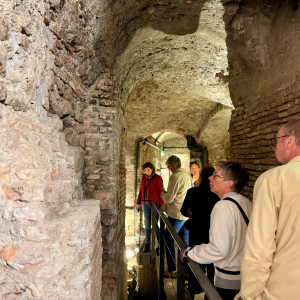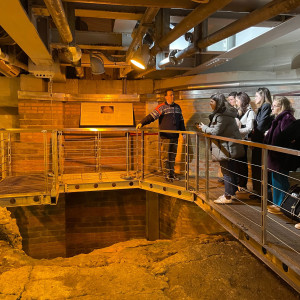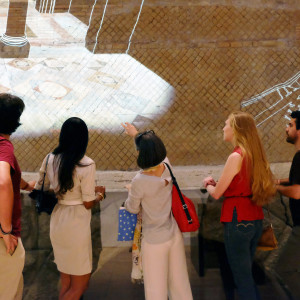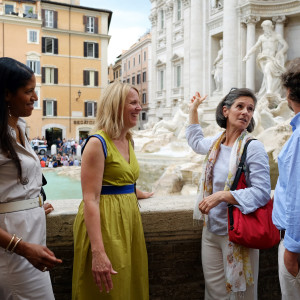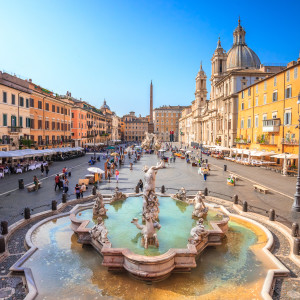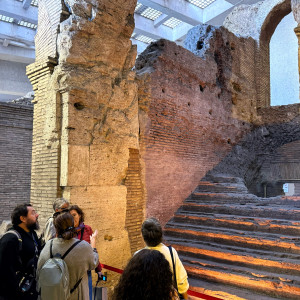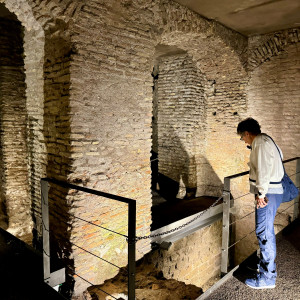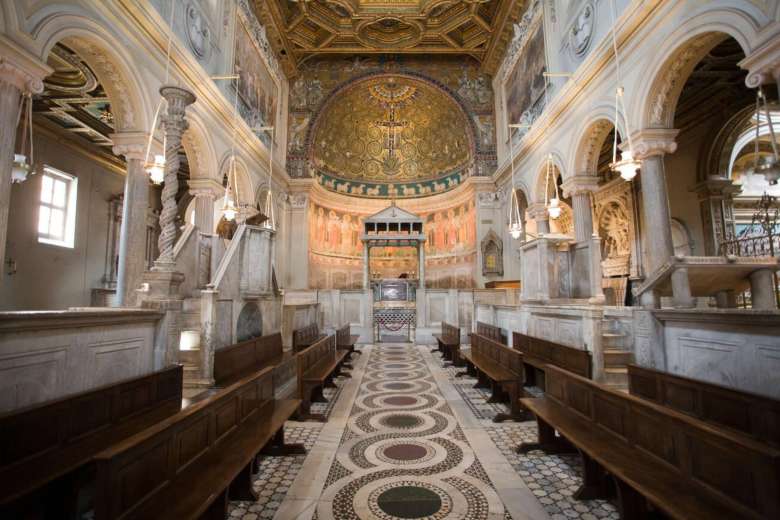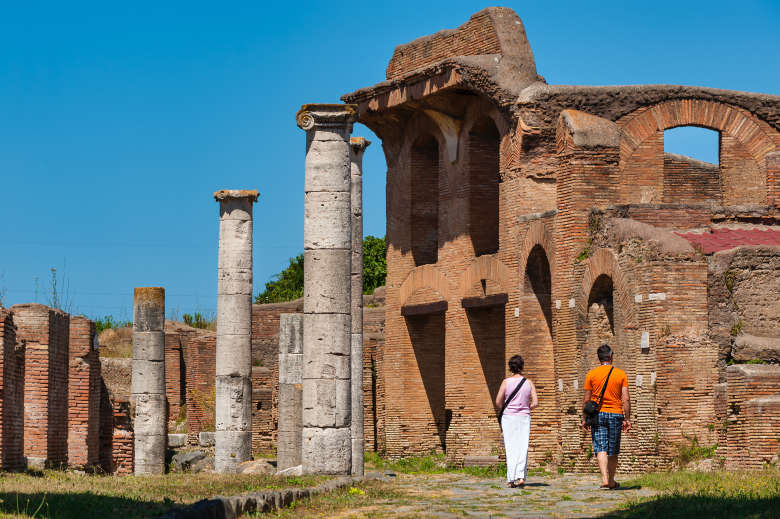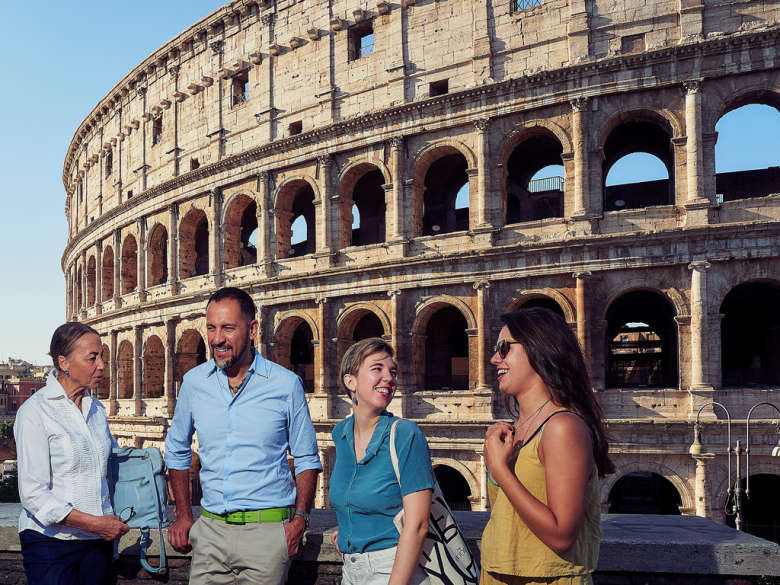Tour Details
- Duration
- 3 hours
- Product Type
- Tour
- Venues
-
- Vicus Caprarius
- Rinascente Tritone
- Stadium of Domitian
Select a date
SunMonTueWedThuFriSat
303112345678910111213141516171819202122232425262728293012345678910
Tour Description
Ever wondered what the streets of Rome looked like in the past? How much has changed over the centuries? Rome still holds countless traces of its ancient face: some hidden in plain sight, others buried beneath the modern city.
With the guidance of an experienced archaeologist or historian who knows where to look and what to look for, you can uncover these hidden remnants of the past. Explore ancient Roman apartments beneath a modern cinema and discover aqueducts tucked away under luxury shops. The Eternal City's history is made of layers, and this exclusive underground Rome tour unveils all its secrets, granting you private access to a hidden site reserved solely for you and your group.
Experts
You will begin near the Trevi Fountain at Vicus Caprarius, an archaeological gem hidden beneath a modern cinema. Here, you'll explore the remains of ancient Roman apartments, gaining insight into daily life in the past, right beneath today’s bustling city.
Next, you'll visit Rinascente Tritone, a stylish department store with a hidden secret: its basement houses the Aqua Virgo aqueduct, an engineering marvel dating back to 19 BC.
As you stroll through Rome’s vibrant streets, you’ll make your way to Piazza Navona. Unbeknownst to many, even locals, this lively square sits atop the Stadium of Domitian, a vast arena that once hosted thrilling athletic contests.
You will enjoy exclusive access to a private section of the Domitian Stadium at the École Française, right in the heart of Piazza Navona. Your guide will lead you beneath the bustling square for a truly exclusive experience reserved solely for you and your group. You'll have the rare opportunity to explore this remarkably well-preserved site at your own pace, pausing to reflect, ask questions, and fully absorb the atmosphere of this evocative underground space.
This intimate Rome underground tour through the city's layered history, guided by an experienced archeologist, offers a rare glimpse into the ancient world that lies quietly beneath the modern city.
- You’re intrigued by the contrast between modern Rome above ground and the ancient city hidden beneath, and want to explore how these two worlds coexist.
- You want a historian or archaeologist as your guide, bringing Rome’s past to life with expert knowledge and fascinating stories.
- You’re looking for an exclusive experience, gaining special access to hidden sites that most visitors never even realize exist
- Vicus Caprarius – excavated underground space showing ancient Roman apartments situated near the Trevi Fountain.
- Rinascente Tritone – modern department store housing the ancient Aqua Virgo aqueduct in its basement.
- Stadium of Domitian – ancient stadium located beneath Piazza Navona, including exclusive access to the restricted École Française site.
Tickets
- Includes tickets to Vicus Caprarius and the Stadium of Domitian.
- Upon receiving your order, our team will secure a guide. Once the venue tickets are released, we will purchase them. Our team will be in touch with alternative options if we cannot secure tickets for the date and time you requested.
Resources
- Check out our upcoming online lectures which transport you back to Ancient Rome, accompanied by a leading Context Expert.
- Check out Cities of the Underworld on the History Channel; many of the guides who lead this walk were featured on this program.
Wheelchair accessibility
- This tour may not be accessible for clients with limited mobility as it includes a lot of stairs and uneven grounds. Vicus Caprarius has only limited wheelchair-accessibility and Stadium of Domitian is not currently accessible as there are no ramps or elevators at the site and the terrain is uneven and difficult to navigate. Please inform us in case of mobility issues.
Service Dogs
- Service dogs are allowed if you have a medical certificate proving the need.
- For more information about Context Tours, please visit our FAQs.
Is this walk suitable for claustrophobic clients?
You do spend much of the tour underground, although you won't visit any site that is particularly narrow or small.
What makes the École Française site on Piazza Navona special?
You’ll have exclusive access to this private section of the Stadium of Domitian. Unlike other parts of the stadium, this area is reserved solely for your group, offering an intimate look at the well-preserved ruins and their fascinating history.
You do spend much of the tour underground, although you won't visit any site that is particularly narrow or small.
What makes the École Française site on Piazza Navona special?
You’ll have exclusive access to this private section of the Stadium of Domitian. Unlike other parts of the stadium, this area is reserved solely for your group, offering an intimate look at the well-preserved ruins and their fascinating history.
Where does the tour start?
The exact itinerary may vary based on reservation times and site availability, your tour may start at Vicus Caprarius or the Stadium of Domitian. Your confirmation email will include all the details and information.
The exact itinerary may vary based on reservation times and site availability, your tour may start at Vicus Caprarius or the Stadium of Domitian. Your confirmation email will include all the details and information.
Book worry-free—review our flexible cancellation policy here.
Where You'll Start
–
460 Reviews
Reviews can only be left by Context customers after they have completed a tour. For more information about our reviews, please see our FAQ.
Unbelievable tour! Priscilla is a real pro. You can’t come to Rome without seeing it’s underground. Priscilla has a unique ability to capture the chronology of 2,000 years of Roman History in a short period of time. The cherry on top was that she carried us to a local gelato shop and treated us to a snack!
Dan
Mar 21, 2025
Giulia is incredibly knowledgeable and helpful describing all the unique historical events. Her archeology knowledge was thorough and she had an answer to every question. Thanks!
Stephanie
Feb 17, 2025
The tour was great. Paolo is so knowledgeable about the excavations and history and we learned so much from him.
Lori
Feb 15, 2025
